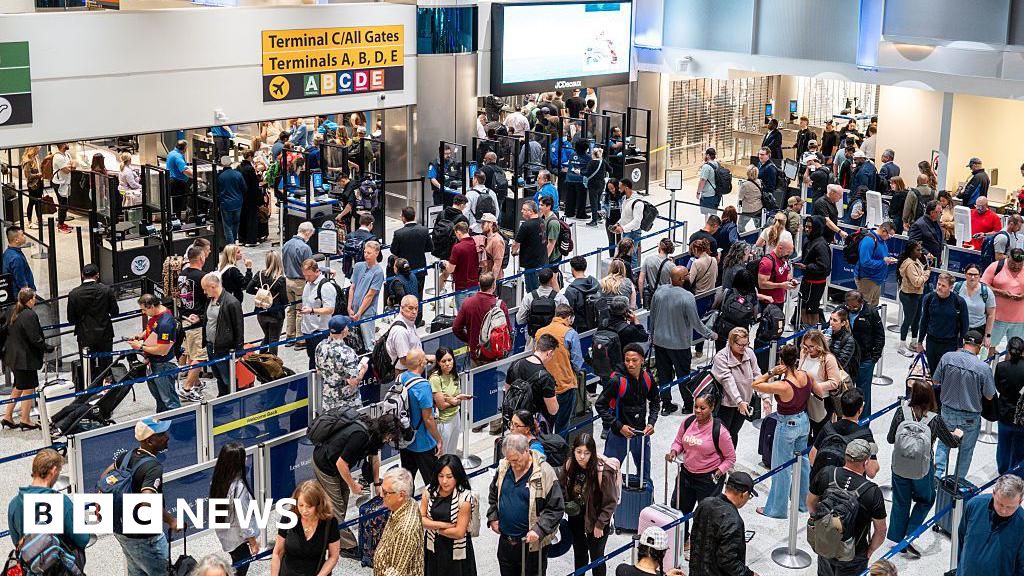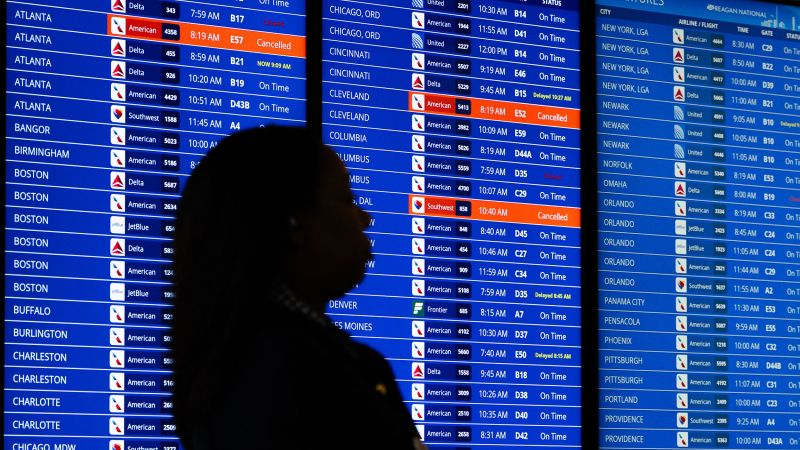In the midst of the ongoing government shutdown, the impact on air travel in the United States has been significant. As more than 1,000 flights were canceled and an additional 5,000 were delayed on a single day, travelers faced mounting challenges due to air traffic controller staffing issues and mandated flight cuts. The Federal Aviation Administration cFAAc imposed a 4% reduction in flights, a measure aimed at alleviating the strain on controllers working without pay amid the shutdown.
Major disruptions were felt across the country, with airports experiencing staffing shortages that led to delays lasting several hours. The situation was particularly critical at control towers, Terminal Radar Approach Control facilities, and Air Route Traffic Control Centers, causing disruptions in various key locations such as Austin, San Francisco, and Washington, DC, among others.
The impact of these flight cuts extended beyond inconvenienced travelers. Many passengers faced heartbreaking situations, such as missing important family events or medical appointments due to the unpredictability of air travel during the shutdown. One such traveler, Sheri Perry, shared her worry about how flight cancellations could affect Red Cross volunteers' ability to respond promptly to disasters.
Meanwhile, the political impasse continued as Democrats and Republicans remained deadlocked on resolving the shutdown. Democratic proposals, including extending enhanced Affordable Care Act subsidies and a stopgap bill, were met with skepticism and criticism from Republican senators. The ongoing struggle to reach a consensus further exacerbated the challenges faced by impacted individuals and labor unions, particularly air traffic controllers working in stressful conditions without pay.
As the shutdown persisted, industries across the nation felt the fallout, with the aviation sector at the forefront of the crisis. The mandated flight cuts, airline cancellations, and delays underscored the far-reaching consequences of the government impasse. With uncertainty shrouding the potential duration of the shutdown, the resilience of essential workers and the perseverance of affected travelers were put to the test in navigating the turbulent skies of disrupted air travel operations.
Against this backdrop of chaos and uncertainty, stakeholders in the aviation industry scrambled to mitigate the disruptions, offering rebooking options and waivers for affected passengers. Travelers, in turn, grappled with the challenges of adjusting their plans amid the evolving situation in hopes of reaching their destinations with minimal disruption.
As the government shutdown loomed over the nation, casting a shadow of uncertainty, the cascading effects on air travel highlighted the interconnectedness of various sectors and underscored the urgent need for a resolution. The stories of individuals grappling with canceled flights, missed opportunities, and personal hardships painted a vivid picture of the human toll of the shutdown, serving as a poignant reminder of the real-world consequences of political gridlock on everyday lives.


